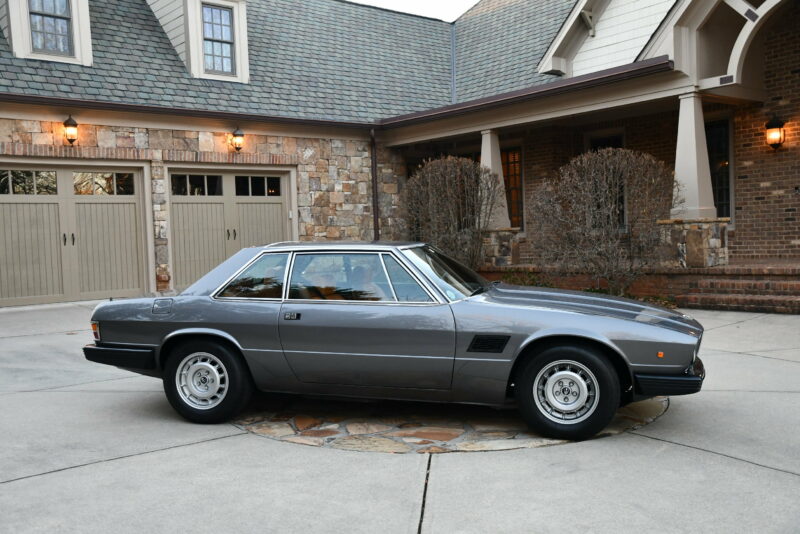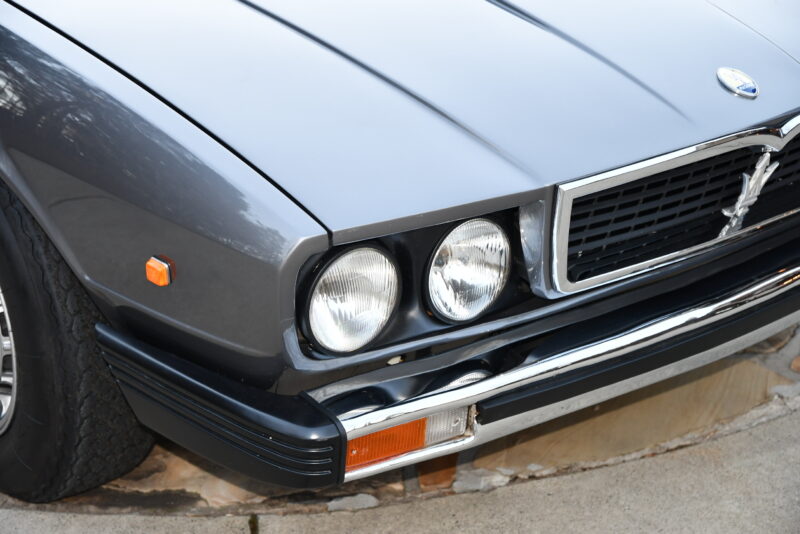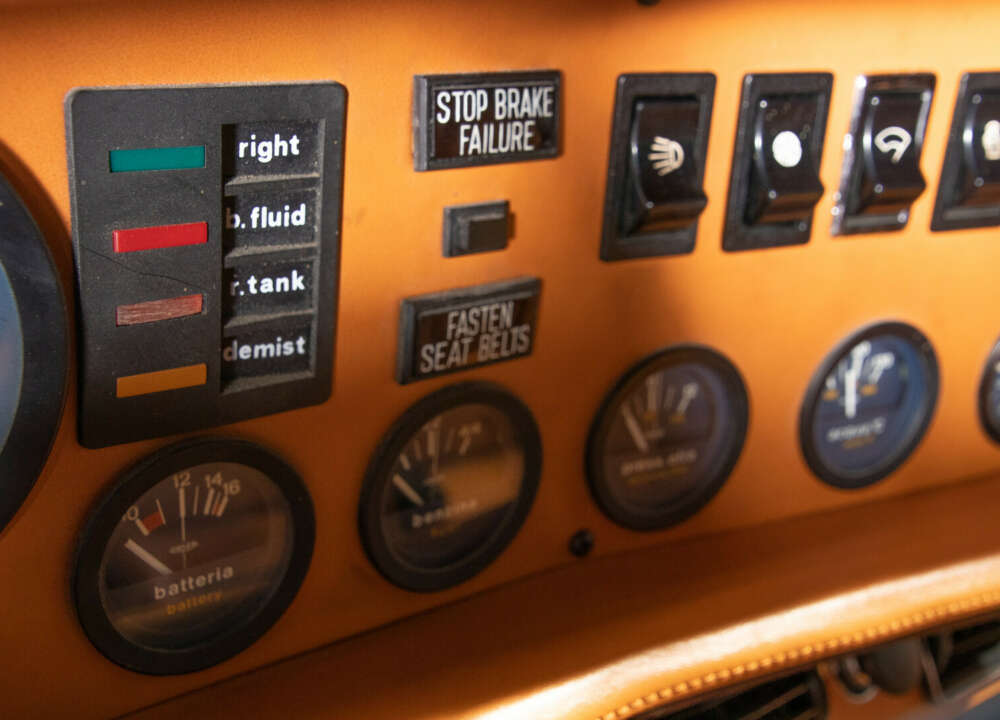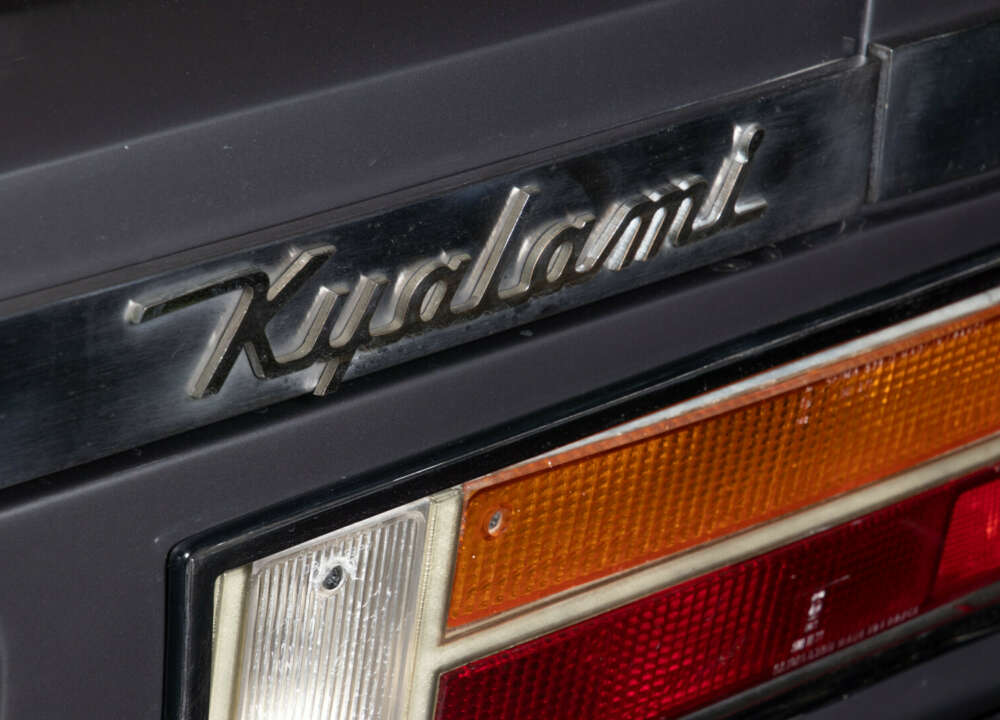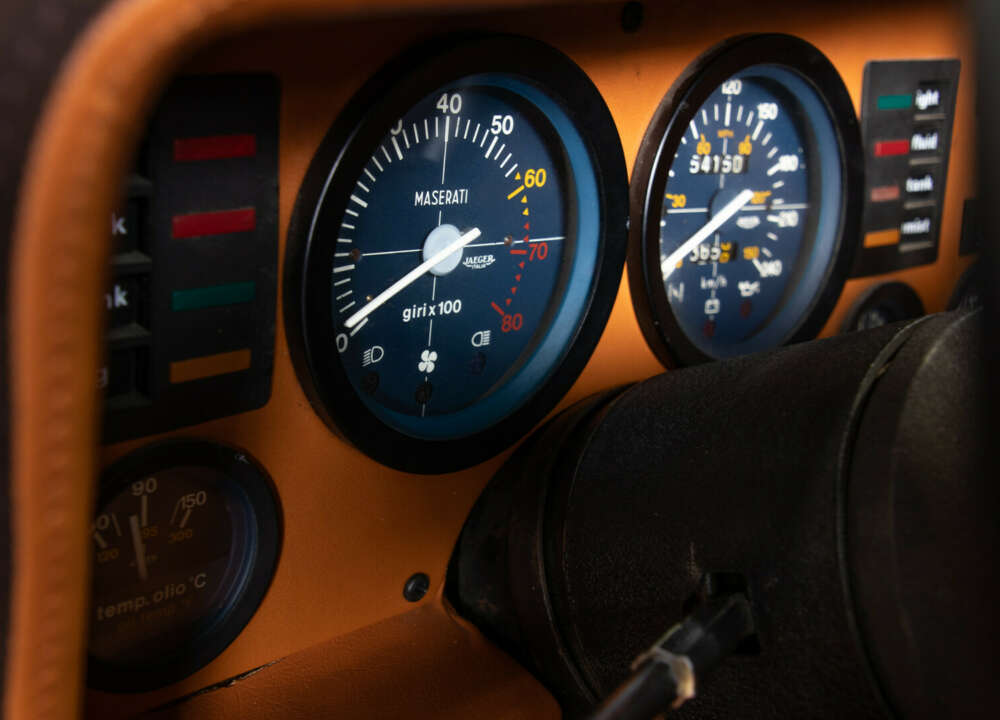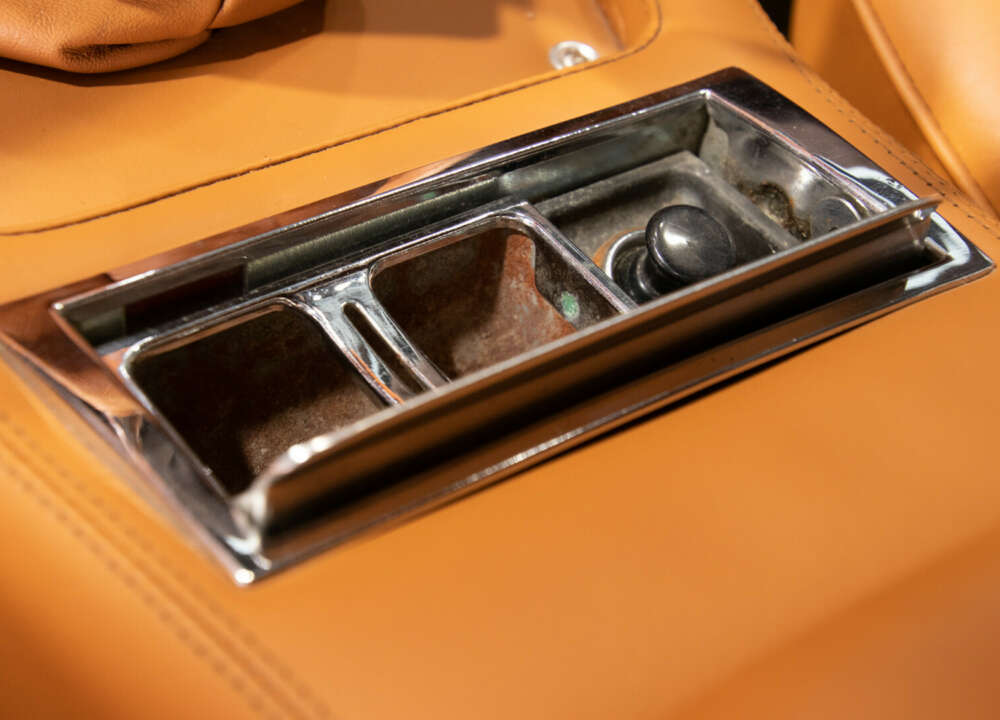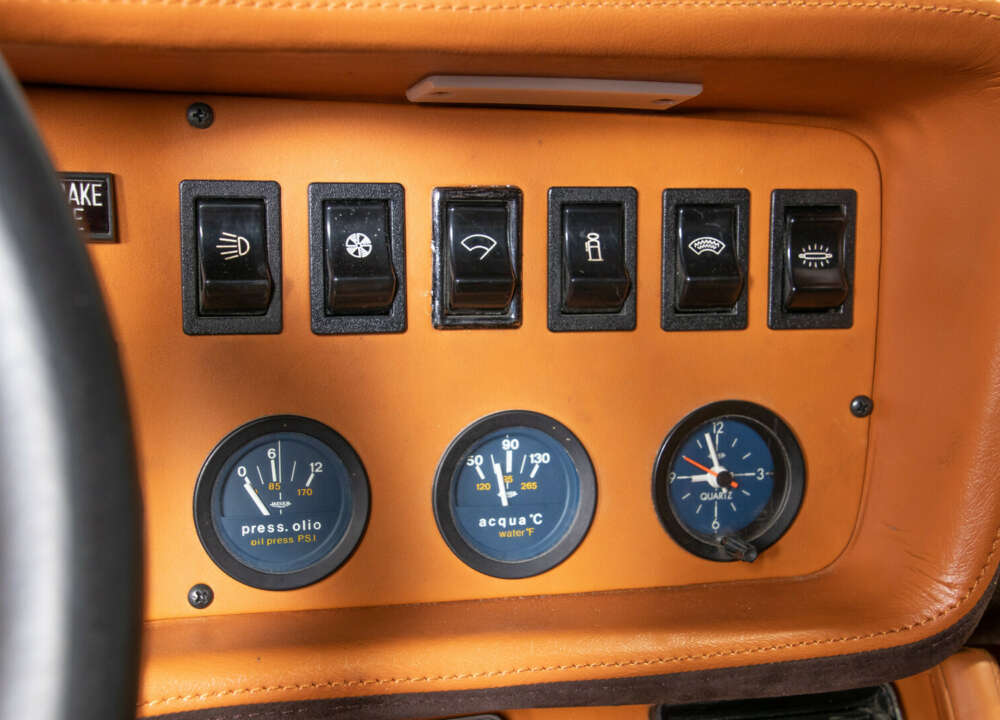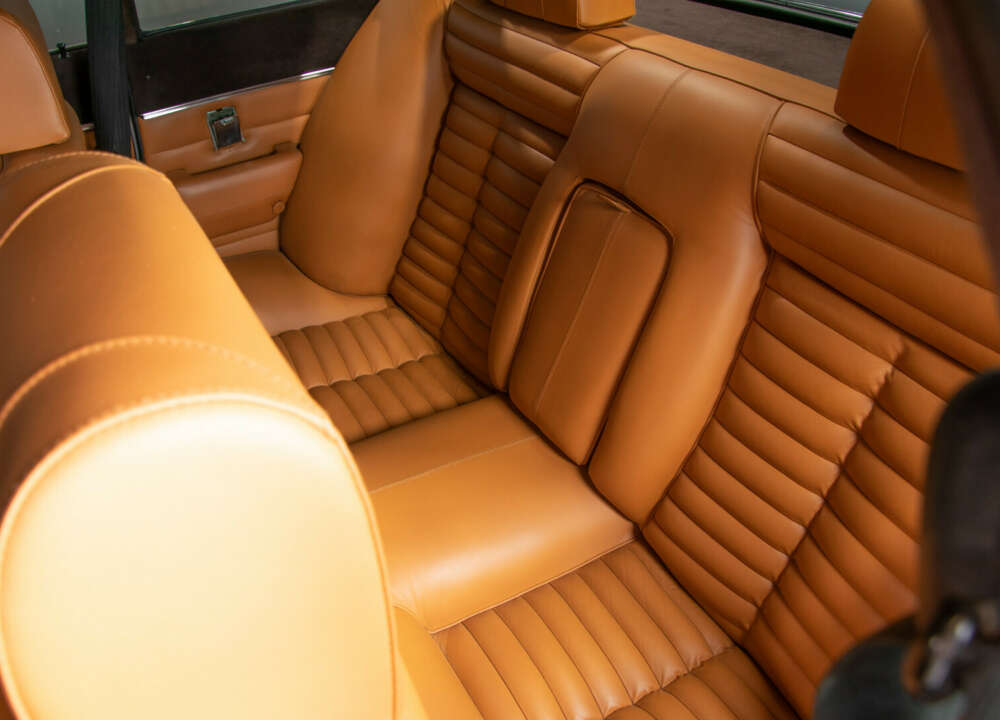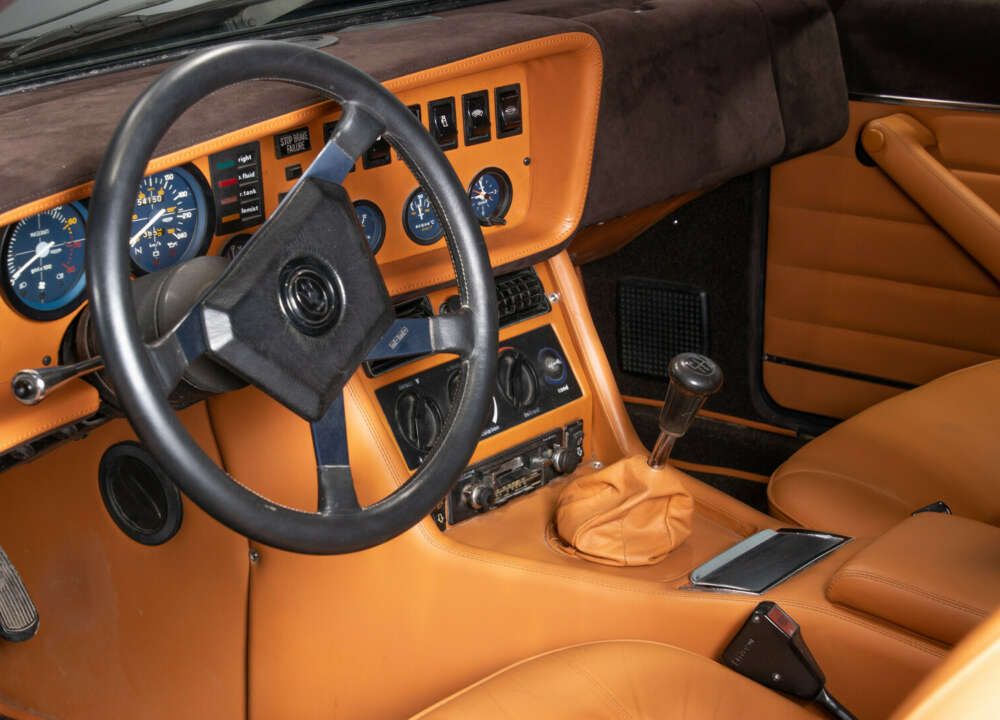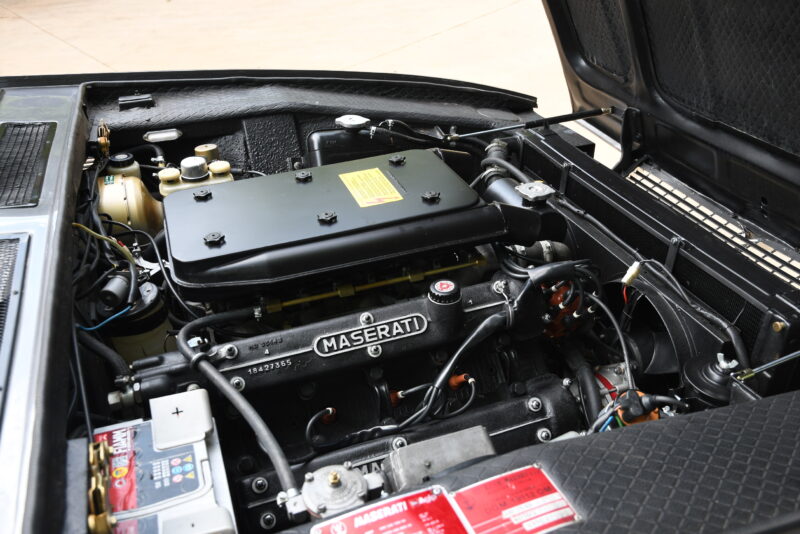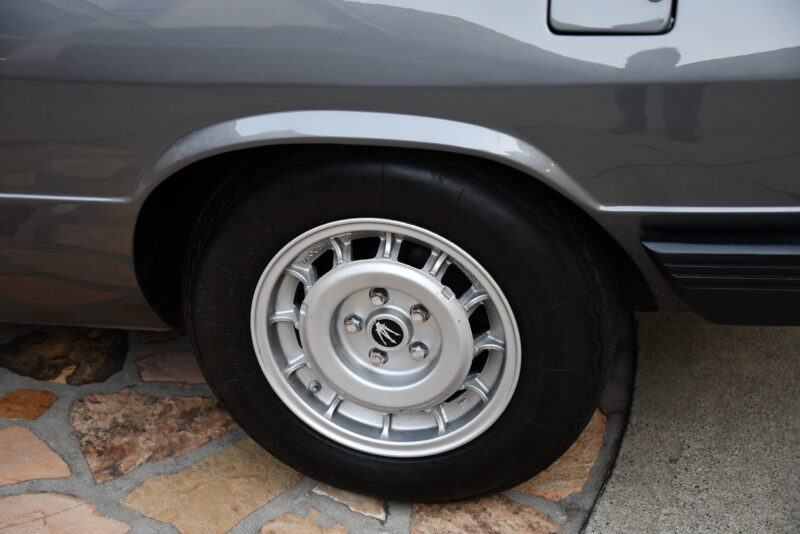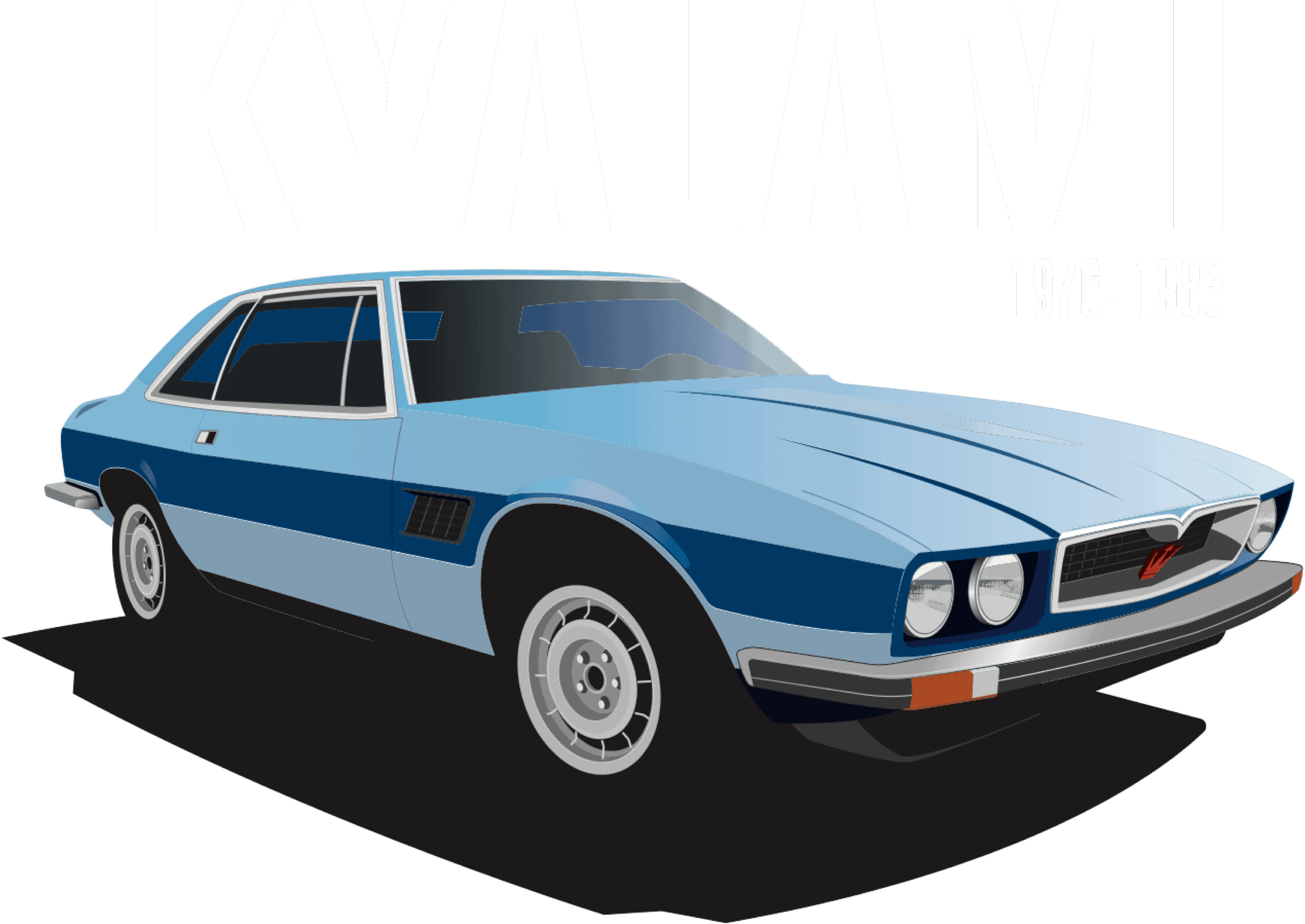
A rare gem that deserves to be discovered, blending sober elegance, practicality and real GT performance.
The Kyalami very much marked the transition between the Citroën era, brutally curtailed by the energy crisis, and that of de Tomaso. It stands out as being the only two-door made under de Tomaso rule with the iconic V8 whose DNA dated back to the Maserati 450S as well as the last coupé ever introduced to use it. Only the Quattroporte III would carry that engine in future.
The Argentinian wanted to stamp his authority on the Trident right away. Secondly, knowing that the Biturbo project would take years of development, he resorted to using the de Tomaso Longchamp as a base to produce a new Maserati model to generate some income quickly. Predictably there were indeed cries of bastardisation, of it being a hybrid, a de Tomaso in camouflage. But 44 years after its 1976 launch, it is firmly seen as a rare and bona fide classic GT from Viale Ciro Menotti.
This coupé was modified to receive the Maserati V8, was restyled cosmetically outside and in and baptised after the eponymous South African circuit in honour of Pedro Rodriguez’s unexpected victory in the Cooper Maserati at the 1967 Grand Prix. Introduced at the 1976 Geneva show, it was styled by Pietro Frua who was remarkably successful in turning the blunt Longchamp Lines into a distinguished coupé, particularly with the nose treatment, slightly lowered with the integration of Trident and centre pointed lip above it. Quite surprisingly it used Citroën SM rear lights made by French supplier SEIMA, which was unexpected considering de Tomaso’s notorious dislike of the French firm! The platform was that of the Longchamp, which itself was a shortened version of the Jaguar look-alike Tomaso Deauville 4 door, introduced in 1971. Its concept and suspension were pretty similar to what Jaguar did at the time. Gone were the days of de Dion rear axles, it featured fully independent rear suspension. Initially, it came with the previously retired and thus revived 4,2-litre V8. last seen in the Indy with a choice of 5 speed ZF or 3-speed Borg-Warner auto. Its production remained limited, and there were few magazine test drives. In 1978 the 4,9-litre version was introduced while the choice of both transmissions remained.
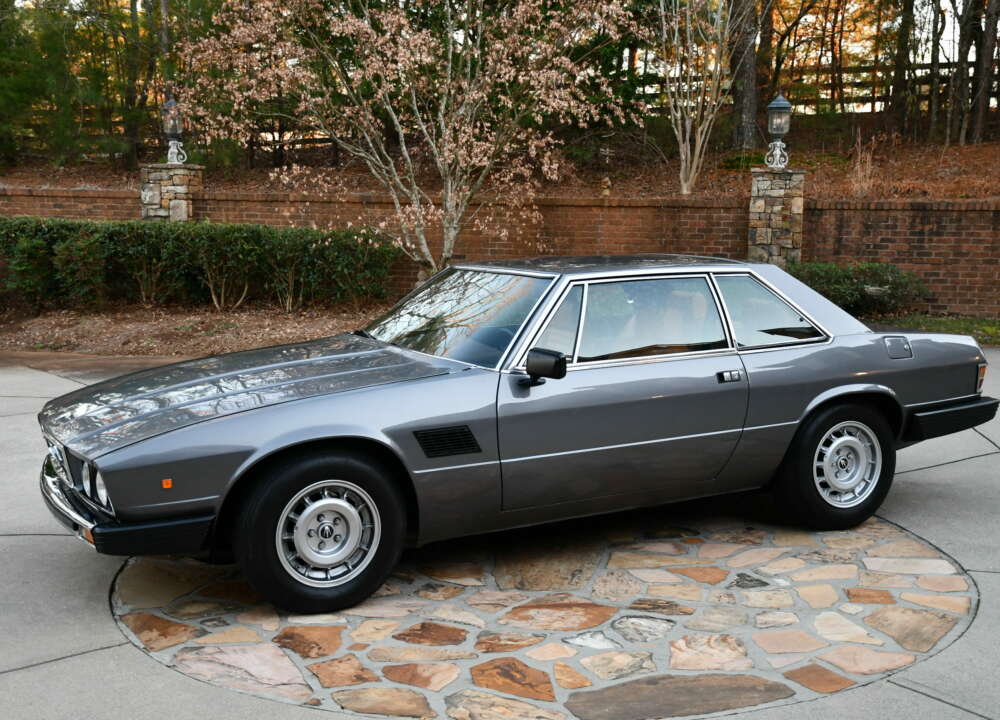
On the road, it was like a more practical Khamsin with upright seating position for four adults, good outward visibility and surprisingly good handling. The power steering and brakes were of the traditional variety.
Driving an impeccable 4,9-litre 5-speed is a real eye-opener. It does everything well with gravitas and feels in no way excessively heavy. Of course, a 4,2 litre automatic would be more ponderous but still shine as an authentic Trident grand tourer. It is efficient in town, yet supremely at ease on the Autostrada. The few period test drive articles agreed.
Specifications
Only 200 cars were made as the socio-economic realities of the time along with the tense political climate were not conducive to sales of thirsty V8’s. Furthermore, the Maserati network saw a lot of turnover during those years, which did not help sales. As mentioned, there were four possible versions *: 4,2-litre automatic or 5-speed, 4,9-litre automatic or 5-speed—this last being the more desired (125 with 4.2 engine, 75 with 4.9 engine).
There were no notable evolutions other than Bora type wheels used for the prototypes before production models received different ones. Frua, by then in its final years, cut a Kyalami 4,2 litre into a Spyder to tempt the factory but de Tomaso declined to pursue the idea. A couple more were made privately with or without Frua’s intervention. Only three Kyalamis were produced in 1976, with the bulk being made in 1977 - 59 - and 1978 -72- before production trickled down to 24, 15, 22 and 8 the following years with the last seven leaving the factory in 1983. When reviewing annual production numbers, it appears 210 were made. Famous owners included Luciano Pavarotti, the world-famous tenor who was actually from Modena and a regular visitor to the factory.
No Kyalamis were imported in the US and are almost exclusively to be found in Europe – with 30 sold in the UK in right-hand drive, 15% of production – but as of 2020, at least four are known to be in the USA where they were imported privately.
Engine
V8, light-alloy block
4136 cc; 4930 cc for Kyalami 4900
Power output: 255 hp; 280 hp for Kyalami 4900
Body
Two-door; 2+2 Coupé; a monocoque body shell
Designed by Frua
Performance
235 kph; 245 kph for Kyalami 4900
* RHD and LHD
44 RHD coupés: 30 UK - 7 Australia - 4 South Africa - 3 Hong Kong - 23 were 4.2 (all manuals) - 21 were 4.9 (10 manuals - 11 automatic).
LHD coupés: 156 in total 102 were 4.2 (101 manual - 1 automatic) - 54 were 4.9 (40 manual - 14 automatic)
Competitors
The Mercedes 450SLC and the Longchamp it was based on and which had been styled after the German car.
As ever the Stuttgart machine was made in higher numbers and will provide a more sorted ride but lacking any charm sought by Maseratisti. The Jaguar XJS was also considered by Kyalami prospects and was much cheaper, though today they also appear mass-produced when compared to our car. The Longchamp feels crude in comparison with its muscle car engine and very limiting automatic gearbox which almost all of them had with only 17 given manual ZF boxes. The Aston Martin DBS V8 was also a competitor though more towards the Khamsin and was the priciest in the group at GBP 36.000 almost double the Jaguar XJS.
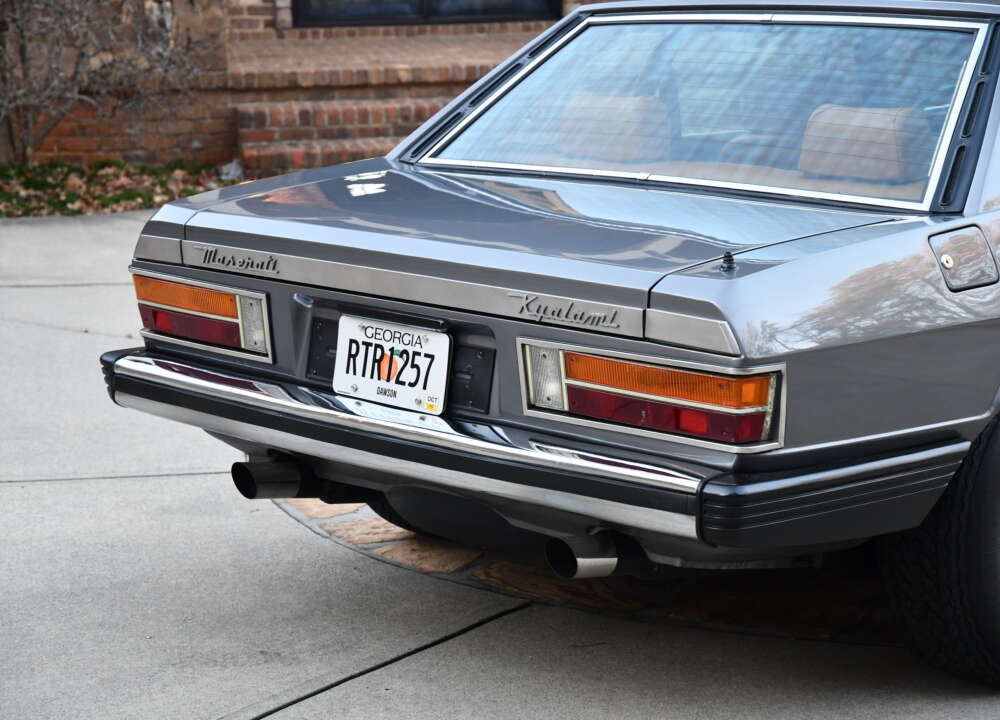
Valuation
Kyalami sales, particularly at auction, are by definition rare and the actual prices paid in private transactions are as ever confidential. However, five changed hands under the gavel in recent years. One at the RM Milan Duemille Ruote November 2016 at Euro 84.000 and one at Artcurial Monaco July 2017 at Euro 69.500 and two in 2018. Both of these were in the UK with one not sold in a minor auction and another reaching only 38.475 Euros (33.600 GB Pounds). A 4,2-litre automatic very early car - stated to be Alessandro de Tomaso’s former personal car - sold for Euro 54.000 at the April 2019 Essen Techno Classica RM Sotheby’s auction in Germany. Classified ad prices in recent years have hovered anywhere from 60K to 100K Euros with the proper value situated between 50K and 80K Euros depending on condition. As always buy the best you can afford as saving upfront will be punished later.
Persuasion
The Kyalami has a lot going for it. The classic V8 in its twilight and refined, elegant lines that are tasteful yet discreet. It is efficient with excellent visibility all around, four real seats and a large trunk. Furthermore, the sum of its parts makes it something better than would have been expected: it all gels very well together. Its rarity will naturally appeal anyone drawn to classic Maserati GT cars. This argument does not mean that you should buy the first you find and as always with these cars, you must be prepared to look beyond your country. The Kyalami destined for you might be in Barcelona, Hamburg, Vienna, Rome. Please do your due diligence, don’t hesitate to travel to see what is available out there, it will be well worth the effort. A review of the market on this day showed two 4,2-litre manual and one 4,9-litre automatic on a major sales site. If you are dead set on finding a 4,9-manual and cannot find it then choose the manual gearbox 4,2 over the automatic 4,9 as the interaction with the manual gearbox is far more rewarding than the insignificant difference in performance between the two engine sizes. One last argument in its favour: which is the classic Maserati model owned by Andy Heywood of McGraths Maserati, one of the absolute top experts? You guessed it.
Initial texts by Marc Sonnery.
Registry
This registry is in the hands of the Classiche Masters team and was first started in June 2020. So If you happen to have information about these cars please mail info@classichemasters.com or go to https://join.classichemasters.com/c/Kyalamin-Registry/. A one-time registration is required.

